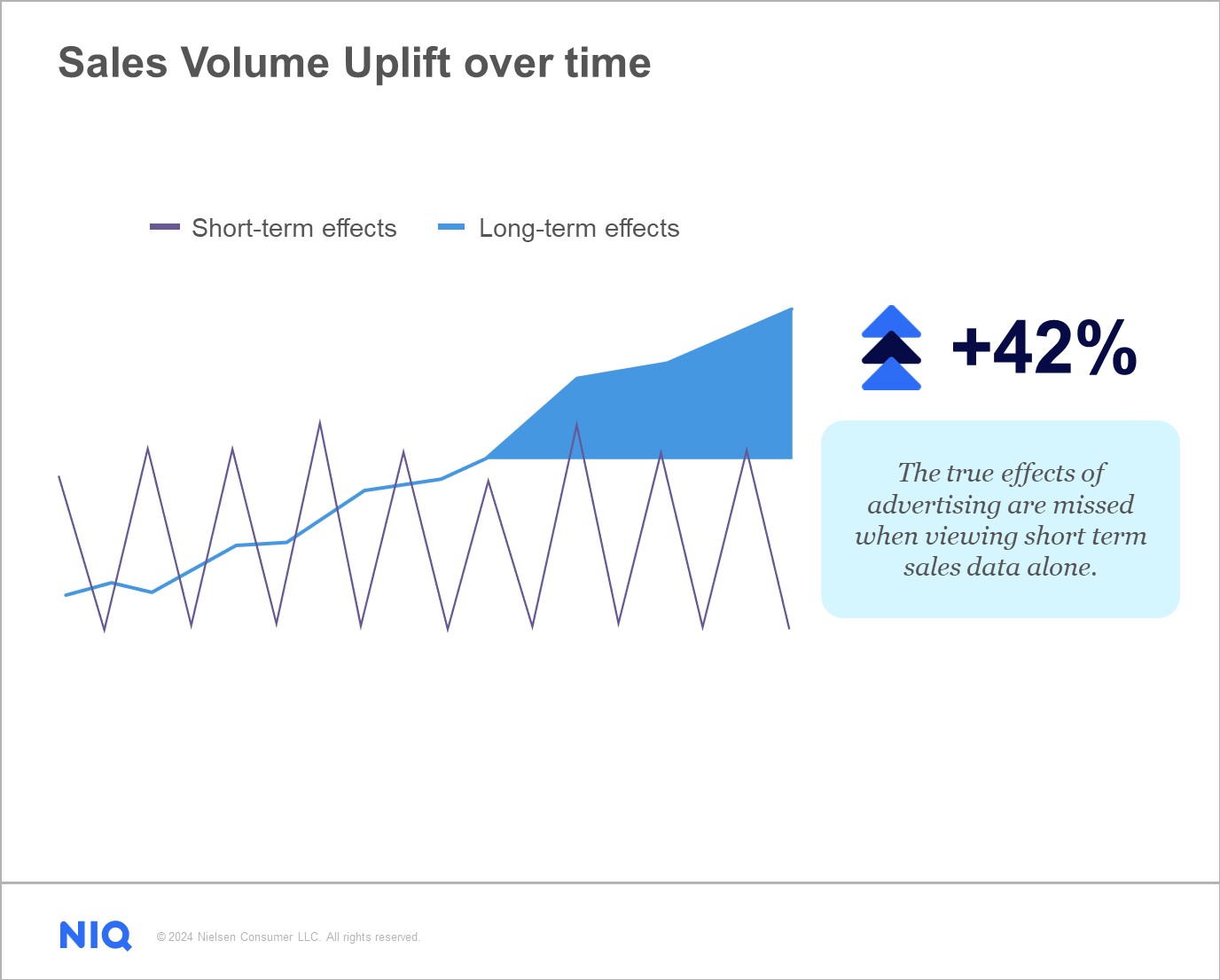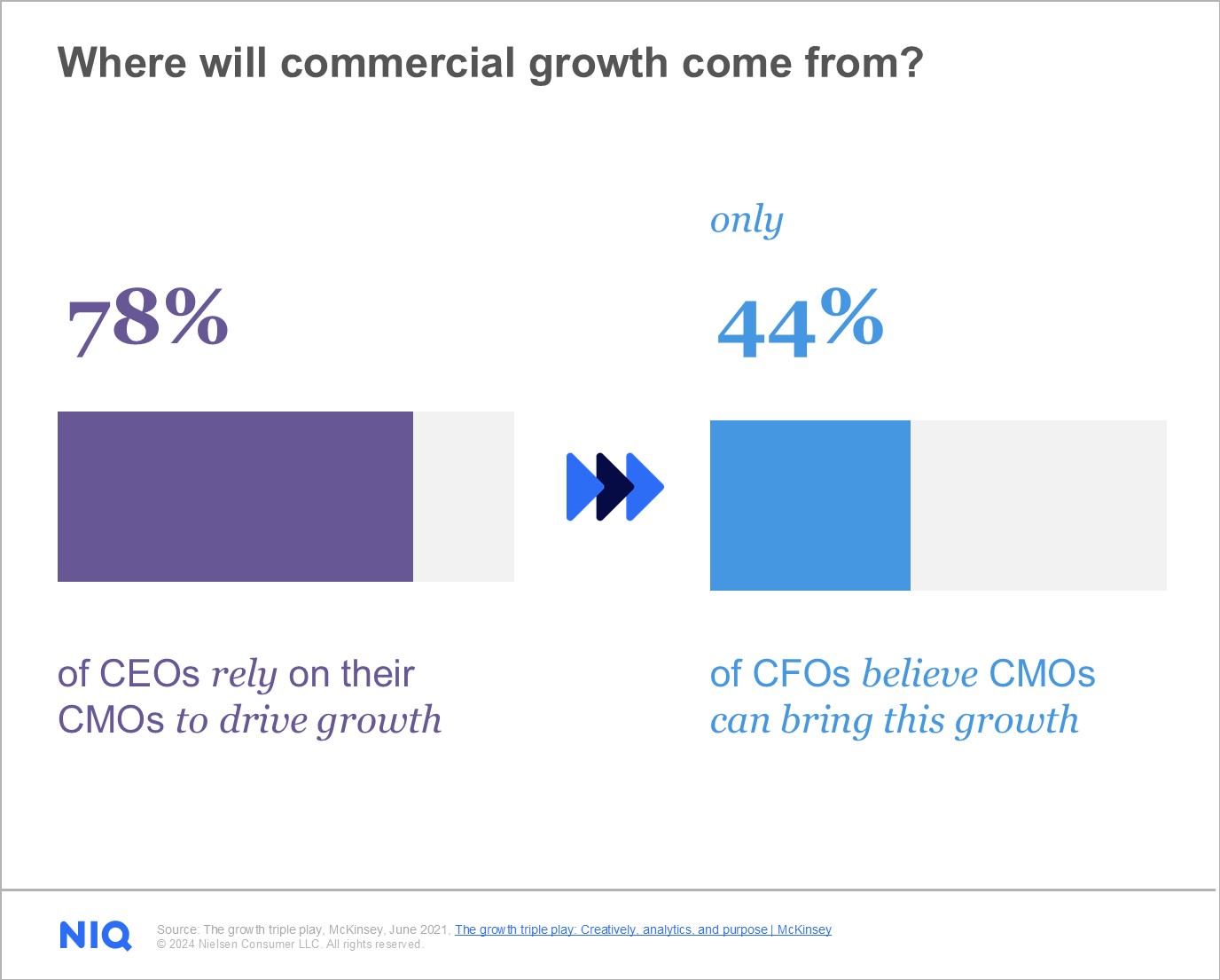The Brand Value Gap: The disconnect between Marketing’s vision and Finance’s reality
The role of the marketing function is pivotal in steering companies towards growth by championing the consumer voice at an executive level. Marketing’s importance in driving business performance cannot be overstated, as it introduces empathy, understanding, and a consumer-focused approach which is key to identifying new opportunities for growth, increasing effectiveness and gaining competitive advantage in the market. A consumer-lead approach shifts the focus from solely analyzing past sales and financial performance to balance this with a forward-looking strategy that anticipates and responds to changing consumer needs and behaviors.
CMO’s often face the challenge of demonstrating their work’s commercial impact. Brand building is key to unlocking growth but it is a long-term investment; its effects on sales and market share are not immediately apparent. It works subtly, cultivating connections, mental availability, and positive perceptions among consumers, which influence their future purchasing decisions as much as what they buy today.
A recent study conducted by GfK, an NIQ Company, in collaboration with Meta’s Marketing Science team found that even in the FMCG sector, 42% of campaign sales impact was long-term with 58% short-term. This long-term impact rose to 59% in Telco and Retail, and 76% in the Tech and Durables sector, exposing the significant gap in measurement when companies focus on short-term sales alone.

Bridging the Gap for Mutual Success
McKinsey’s Growth Triple Play research found that although more CEOs recognize the growth potential from the marketing function, fewer CFOs believe they can bring this growth. This aligns with data from NIQ’s CMO Outlook survey where 44% of Marketing leaders agreed very strongly that “My CEO and CFO believe in the value of investing in our brand for the long-term”, an increase from 41% in 2023. In this survey, we also see that only 31% feel they have “the right balance between short-term return and long-term brand building in our marketing”. So, while CEOs have heard the message, CMOs are not yet able to convince them to back long-term brand investment over the imperative to deliver short-term sales impact.

To bridge this gap, CMO’s and Brand Leaders must strive to articulate the value of brand building in terms that resonate with financial stakeholders. This involves linking marketing efforts to market performance and demonstrating their contribution to the company’s success in measurable terms. By speaking a common language with CFOs focused on shared financial outcomes, CMOs can make a compelling case for the strategic importance of their work.
Jonnie Cahill, CMO at Heineken USA has been successful in crafting this common language and getting the CFO behind brand as ‘the disproportionate unlocker of growth’. His advice to other CMOs: “It’s our job to help CFOs understand us…you have got to get the conversation into terms that they understand, which is revenue, margin, accretion, growth, market share, profitability…in order to defend the discipline, it’s a part of the job.”
When brand strength is measured and linked to sales performance, CFOs begin to recognize the long-term payoff of brand-building investments—not just in terms of volume but also revenue.
Want to learn more about NIQ Brand Architect?
Measuring What Matters: Quantifying the impact of brand building
Talking the language of the CFO and demonstrating the contribution of brand strength to sales revenue allows CMOs to get the whole business aligned behind the brand to create a common language, strategy and purpose, held together by the values and mission of the brand. Organizations that fully back the brand from finance, through to sales, marketing and brand leaders, can jointly unlock the full potential of their brands. The result will be a longer-term shift in focus. Brand strength will become the company’s north star unlocking not only volume growth but also revenue growth.
How are volume and revenue growth unlocked? The outcome of brand building is two-fold. Not only does a great brand strategy speak to a wide audience influencing their choice in favor of your brand, thus attracting new users and ensuring current users remain loyal, but it also has a hidden but more profound impact. It decreases people’s sensitivity to price increases. The result is that more people will choose your brand, and they will be willing to pay more for your brand—the outcome is a long-term multiplier effect proven in the Meta research. According to Emily Ketchen Lenovo’s CMO, price inelasticity is the key to demonstrating the value your impact to CFOs. Reducing the need for discounts and promotions is “great for the organization, it’s great for your products, and it’s great for your CFO”.
When the entire business gets behind the brand, everyone will recognize their impact on brand building. This is important since each interaction consumers have with the brand, whether through product, experience, communication or in-store activation, either builds or erodes brand strength. When brand is in sync with sales, stars align and the outcome is a consistent reinforcement of brand strategy through marketing activation.
Internal multiplier effects will come into play. Sales teams will recognize that success isn’t only measured by yesterday’s sales figures; they will understand that a strong brand today means higher sales tomorrow.
Budgets will be unlocked for brand building activity and greater consumer centricity will result as the company focuses their efforts on bringing consumers value within and beyond product delivery.
A Seat at the Table: Empowering marketing to lead growth
When CMO’s have the right measurement tools that showcase their true impact, the doorways to growth will be opened. They will have the confidence to continue to bring the consumer perspective to the forefront of business strategy and the evidence to demonstrate the tangible financial benefits of such an approach. By doing so, they can secure the support of the board and position marketing as a key driver of business growth. This all begins with measuring right, measuring long and connecting brand performance to market reality.

Are you ready to transform your brand into a powerful revenue generator?
Learn more about Brand Architect, the only brand measurement tool that links brand performance to market reality, only from NIQ.
Download our e-book to discover actionable strategies and gain deeper insights into How to Build an Irresistible Brand.
Sources:
1 CMO Outlook survey, NIQ, 2024
2 The Full Value of Media, Meta Marketing Science 2022
3 On Strategy Showcase 16 April 2024
4 The Growth Triple Play, McKinsey, 2021
5 Lenovo CMO: Demonstrate marketing’s role in protecting price to make talks with the CFO ‘easier’, Marketing Week, June 2024.